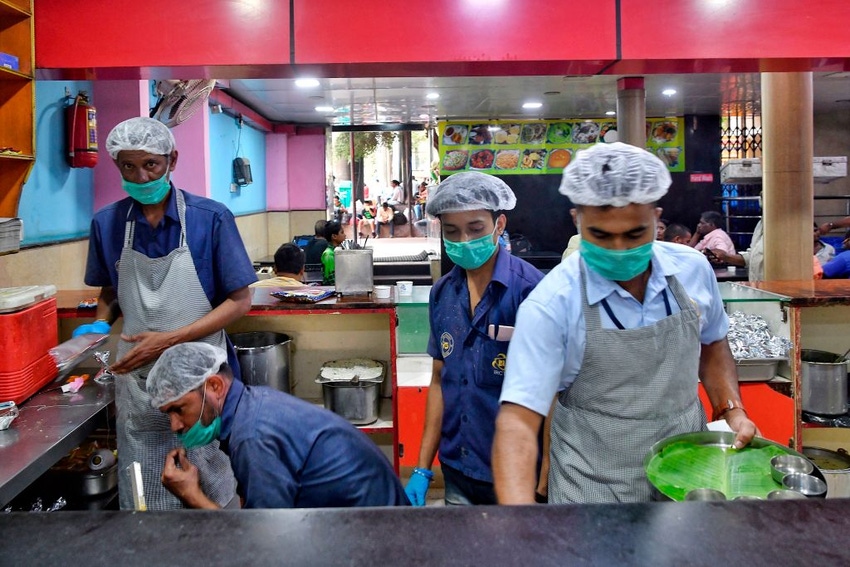COVID-19 continues to hammer markets. Here’s some perspective.

A reader sent an email last week in response to our coverage about the coronavirus, now called COVID-19, and the cattle markets. Here’s the question:
“How do we recoup our loses when selling cattle at this time? We have no say in prices and what does this virus have anything to do with cattle prices? Make a no sense to me.”
It makes no sense to most folks in the cattle business. The reaction seems overdone and while the popular media keeps us informed on the body count, those reports offer no perspective, which further fans the flames.
READ: Coronavirus: Human strain vs. livestock strain
Here’s the perspective. the Centers for Disease Control (CDC) estimates that so far this season, there have been at least 34 million flu illnesses, 350,000 hospitalizations and 20,000 deaths from flu. That’s in the U.S.
COVID-19 in the U.S., as of March 10, consists of 647 cases and 25 deaths, according to the CDC. Globally, there were 113,702 confirmed cases and 4,012 deaths as of March 10, reports the World Health Organization.
Don’t misunderstand. I’m not making light of the potential of COVID-19 to spread and continue to cause illness and deaths. But compared with the flu, it hasn’t reached the level to cause the panic we’re seeing in the markets, in my opinion.
But panic is painfully present and will continue until the virus reaches its peak and begins to tail off.
READ: How low will the Corona Swan swoop?
Here are my answers to the reader’s questions, with some added comments following conversations with folks whose thoughts and opinions I respect.
Thanks for your email regarding the coronavirus and cattle prices. There is no short or easy answer to your question about what the virus has to do with cattle prices. But I’ll take a short stab at it.
Markets do a couple of things—attempt and ultimately arbitrate supply and demand and they usually act in sympathy with each other. Both of those factors are at play in the cattle market.
As the coronavirus spread and escaped China, the fear globally was what effect it would have on the people and economies of the countries that were experiencing outbreaks, and on the other countries that trade with the affected nations. Based on what we saw happen in China—lots of people who stayed home, didn’t go to work and didn’t spend money, the fear of an economic downturn sent stock prices significantly lower.
A recent report from USDA’s Foreign Agricultural Service provides a snapshot of how coronavirus is impacting South Korea, a key customer of U.S. beef exports: “The local economy is slowing down due to weak retail sales and reduced economic activity. Many companies have temporarily closed their offices and processing facilities to prevent spread of the virus. The Korea Economic Research Institute (KERI) reported Feb. 24 that its Business Survey Index (BSI) for February 2020 fell to 78.9, down 7.6 points from January, the lowest level since February 2009.”
That’s the demand part of the equation. The people who make the markets feared that the virus would cause people to reduce their spending, which would hurt economies. In my mind, that’s a very real concern.
As for supply, domestic beef, pork and poultry production will likely be record large this year; production was record large last year, too.
So, Cattle futures responded first to the fundamentals of declining global demand— and perhaps declining domestic demand depending on how the virus plays out here—relative to increasing production. At the same time, vast pools of managed money that held long positions in Cattle futures exited those positions, adding momentum to the downturn. In recent weeks, however, Cattle futures appear to have decoupled from fundamentals to trade in tandem with equity markets. Along the way, electronic algorithmic trading adds to the volatility.
Ultimately, that works its way down to cash prices for cattle. It’s not fair and its not fun, but that’s the way markets work.
So, if you want to protect yourself in some way from those dynamics, you have some options. They typically require effort, more management and added cost, but if done right, can put you in a position to take advantage of what the market has to offer, rather than just taking what the market has to give.
For example, work with your veterinarian and sale barn on a vaccination-preconditioning program, then help the sale barn let buyers know that your calves are better prepared for the journey ahead than unweaned, unvaccinated calves. Talk with your Extension professionals about other ideas to make your calves stand out from the high-risk crowd.
Andrew P. Griffith, an agricultural economist at the University of Tennessee, noted in his recent market comments: “Producers must take advantage of the opportunities being offered by the market and buying is the opportunity being offered right now.” He suggested now might be a good time to consider hedging strategies related to purchasing cattle in the summer and fall months. Conversely, he emphasizes it’s not the time to hedge the sale of cattle in the summer and fall.
To your question about recouping losses, that’s even tougher to tackle. There’s no one-size-fits-all answer, because each operation is different. If you have the pasture and/or feed, you can just wait it out and background your calves. The market will recover, not as fast as we want it to, but it will recover.
If you’re calving now, you have until the calves are weaned. That gives you plenty of time to plan your management and marketing. If you have cattle to sell now, my best thought is to make them as buyer-acceptable as you can to get the best price possible.
I hope this gives you some ideas to chew on. Thanks.
About the Author(s)
You May Also Like



